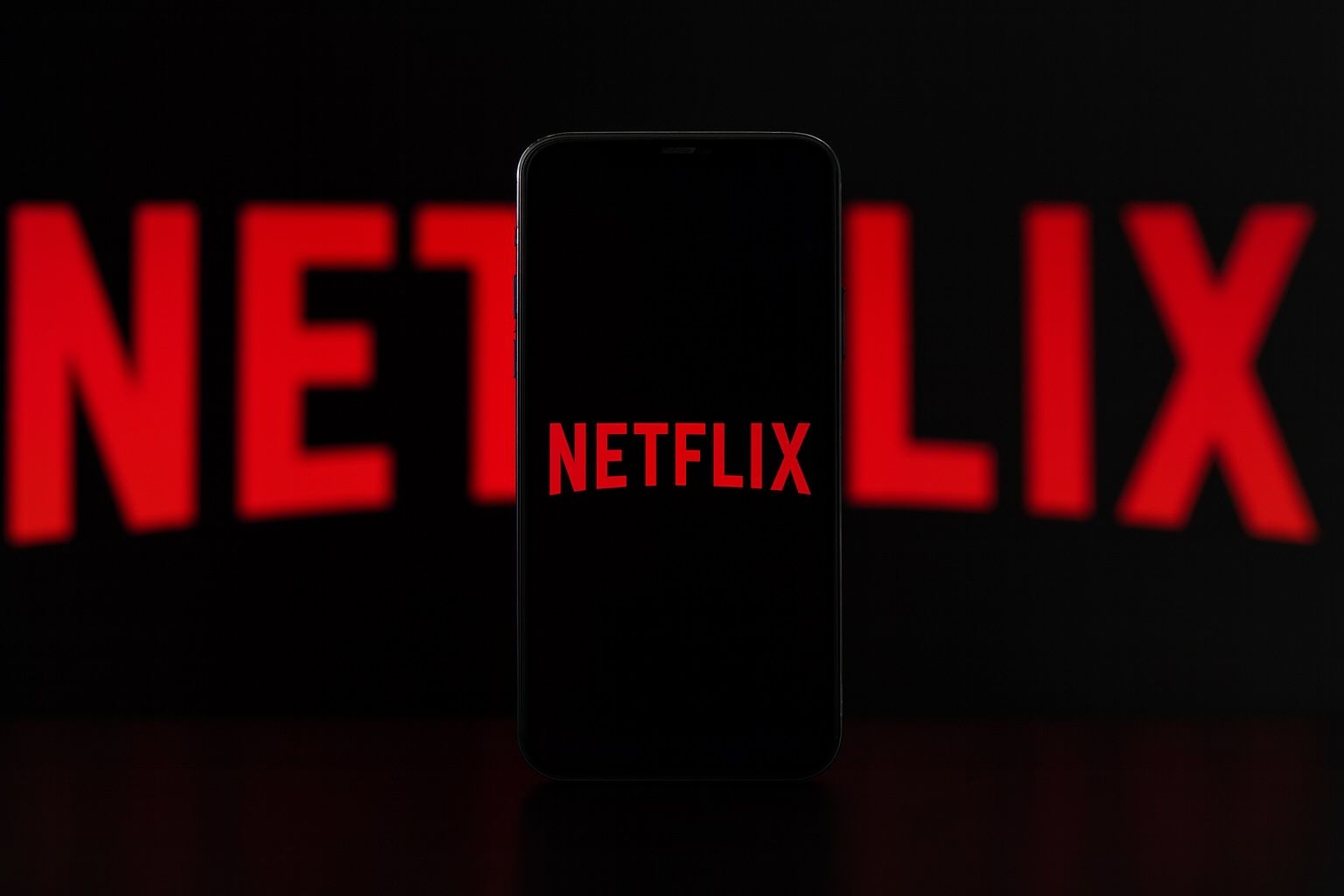- 10-for-1 split announced (Oct 30, 2025): Netflix’s board approved a forward 10-for-1 stock split [1] [2]. Each shareholder of record on Nov 10, 2025 gets 9 extra shares per share held. Trading on a split-adjusted basis begins Nov 17, 2025 [3].
- Purpose – accessibility: The split cuts Netflix’s per-share price roughly tenfold (from about $1,089 to ~$109) to make shares more “accessible” to employees in its stock option program and smaller investors [4] [5]. Management explicitly said it’s to reset the stock price to an affordable range [6] [7].
- Third split in history: This is Netflix’s third split. Previous splits were 2-for-1 in 2004 and 7-for-1 in 2015 [8]. (The company was un-split after 2004, and its share price eventually hit new highs before 2025.)
- Immediate market reaction: The announcement sent NFLX up ~3% in after-hours trading (from a $1,089 close on Oct 30 to about $1,120 after hours) [9] [10]. Investors noted that the split does not change Netflix’s total value, only its share count [11].
- Analyst outlook: Wall Street remains broadly bullish. As of late Oct, 23 of 26 analysts rated Netflix a “Buy,” with 12-month price targets clustering around $1,300 [12]. Optimistic forecasts (Jefferies $1,500, Evercore $1,375, Goldman Sachs $1,300) suggest even higher levels [13] [14].
What Happened: The Mechanics of the 10-for-1 Split
On Oct. 30, 2025 (a Thursday after market close), Netflix announced that its board had authorized a ten-for-one forward stock split [15] [16]. The split is effected by amending Netflix’s charter so that each existing share becomes ten shares. Practically, on Nov. 10, 2025 (record date) every shareholder will receive nine additional shares for each one held, with the extra shares distributed after the close on Nov. 14 [17]. Starting Nov. 17, NFLX will trade at one-tenth of its prior per-share price (roughly $109 instead of ~$1,089), keeping market capitalization unchanged [18] [19]. Management made clear the move is aimed at resetting the stock price to a level that is “more accessible to employees” in its stock-option programs, and by extension more affordable for smaller retail buyers [20] [21].
Importantly, stock splits are largely cosmetic. As one analyst noted, the split “doesn’t change anything about the company or its attractiveness” to big institutional holders [22]. In effect, breaking a ten-dollar bill into ten one-dollar bills makes spending easier but doesn’t create new wealth. Nevertheless, splits often generate excitement: they increase liquidity and can attract new retail investors by lowering the upfront cost of a single share [23] [24].
Timeline: News and Developments Around Oct 31, 2025
In the weeks leading up to late October, Netflix’s stock had been surging on strong fundamentals. As of early Oct. 2025, NFLX was near its all-time high (~$1,241 on Sept. 1) with a market cap around $513–518 billion [25]. On Oct. 21, Netflix reported Q3 results: revenue beat and guidance was solid, but earnings were slightly below expectations due to a one-time tax charge in Brazil [26] [27]. Shares had already risen about 39% year-to-date before that report [28]; after the Oct 21 earnings miss, NFLX stock dipped ~5.6% (to ~$1,171) before rebounding into the end of October [29] [30].
The split announcement (Oct 30 after hours) was the big new catalyst. In after-hours trading on Oct. 30, NFLX jumped roughly 3% [31]. By Oct. 31 morning, the news was widely covered by media (CNBC, Reuters, Yahoo Finance, etc.) and social platforms. Traders noted that while the effective split date is mid-November, many effects are felt immediately: quoted targets, options pricing, and employee stock plan dynamics all adjust in anticipation.
In the days after the announcement, Nike NFLX’s stock remained volatile near its pre-split levels. (On the first split-trading day, Nov. 17, the adjusted stock price should open near $109 if the market was flat — one-tenth of the pre-split price.) Analysts continued to debate the effect: some flagged the split as a positive signal of confidence and liquidity, others as a neutral event.
Expert Commentary and Analyst Insights
Industry analysts broadly called the split a logical step given Netflix’s high share price. EMarketer’s Ross Benes noted that the split will make it “easier for small investors to buy in” [32] but emphasized it doesn’t change fundamentals. Many experts echoed that sentiment: a split is a signal rather than a catalyst. A Zacks analyst in 2015 (for the 7-for-1 split) similarly noted that splitting tends to make a stock “more affordable for smaller investors” and can boost liquidity [33], but the real driver will be Netflix’s continued performance.
On social media and trading forums, market pros were upbeat. For example, on X (formerly Twitter) an options trader commented: “$NFLX doing a 10-1 stock split is excellent for traders and investors. A win-win if you know how to capitalize on it. Cheaper shares and cheaper contracts on options.” [34]. Reddit and StockTwits users largely reacted positively: one user on StockTwits predicted the split “could be great” and even speculated about price targets like $1,400 by split date [35]. Overall, retail sentiment on StockTwits remained bullish even after the news [36].
Analysts continued to highlight Netflix’s strong fundamentals. Streaming revenues and subscriber growth remain robust (300+ million global users as of late 2025 [37]), and Netflix has expanded into ads, gaming, and even live sports deals. Wall Street’s price targets have been rising: Jefferies, for example, reiterated a $1,500 target on Oct. 14, 2025 [38]. Capital.com data confirms 12-month targets in the $1,300–$1,500 range [39], reflecting confidence in continued subscriber momentum and potential price hikes. Notably, Bank of America and others foresee Netflix hitting ~$1,375–1,390 in 12–18 months [40].
Stock Price Performance Around the Split Event
In practical terms, Netflix’s share price history around Oct 31, 2025 was remarkable. The stock closed at about $1,089 on Oct 30 [41] [42], up roughly 42% year-to-date. After the split news, it briefly traded around $1,120 in extended hours [43]. Because a ten-for-one split multiplies shares, one share pre-split becomes ten post-split; thus if nothing else changed, the per-share price would open near $109 on Nov. 17. (Importantly, most price charts will adjust for the split, so analysts look at the pre-split scale for trends.)
Leading up to Oct 30, the stock had been volatile. For context, Reuters noted NFLX’s forward P/E was about 46 (far above Disney’s ~18 and Comcast’s ~7) [44], underscoring its high-growth status. After the Oct. 21 earnings dip, the stock recovered into late October on optimism about future growth. By month’s end, many traders pointed to technical trends (moving averages, pivot levels around $1,200) and momentum indicators as mildly bullish. With the split, the immediate “technical resistance” around $1,250-$1,300 should effectively disappear (since the price scale resets) and traders will watch the new support levels around $100–110 post-split.
Market and Investor Reactions
The split news was well-received by the broader market. Netflix shares closed up on the daily chart on Oct 30, and analysts noted the typical effect of a split announcement. Investing.com reported the post-announcement rise and reminded readers that such splits “have historically been viewed favorably by investors” [45]. Indeed, on StockTwits the article noted trading gains of +3.19% after hours and a +2% rise in WBD (Warner Bros Discovery) amid takeover rumors [46].
On social media, Netflix’s split became a hot topic. On r/StockMarket and other forums, multiple posts (often linking to CNBC or Reuters) showed the split announcement garnering hundreds of upvotes within an hour (e.g. “Netflix announces a 10-for-1 stock split. Upvote 201” [47]). Comments ranged from congratulations (“Finally, small investors can buy in!”) to skepticism (“It’s just make-believe gain, fundamentals unchanged”). Financial influencers and bloggers also chimed in: many wrote that the split could have a psychological boost, while some cautioned that it was merely a technical move.
In the options market, implied volatility initially ticked up (as traders priced in uncertainty) but then eased as analysts conveyed confidence. Anecdotally, mobile investing apps and trading chat rooms lit up with notes about buying smaller “round lots” of NFLX or setting new alerts near $100. Overall, the prevailing mood among retail investors was optimistic: one StockTwits user said simply “Split could be great… Would like to see it test 1000 or lower for a second” [48], indicating confidence that any dip (pre-split) would be a buying opportunity.
Forecast and Strategic Outlook (Late 2025 – 2026)
Looking ahead, analysts are essentially betting that the split will coincide with or slightly precede more upside. Netflix’s own forecasts (October earnings call) were conservative but positive, and many experts expect subscriber growth to continue with the help of new content and initiatives. Notably, Netflix is scheduled to release high-profile titles (like Stranger Things S4 in mid-2026, NFL games in Christmas 2025, etc.) that could drive engagement.
With the valuation still high (even post-split), the question is how Netflix will justify further gains. Bullish scenarios highlight continued strength in international markets and in advertising revenue (the cheap ad tier now has ~94 million users [49]). Bears worry about saturation and rising competition. Yet the split itself adds some momentum: smaller investors may push the stock higher simply by making buying easier. In fact, TS2.tech noted that many Wall Street firms (Bernstein, Evercore, etc.) have raised their targets recently and even advised on “buying the dip” since peers’ price hikes give Netflix room to follow suit [50].
By late 2025, many analysts’ 12-month targets hover around $1,300–1,400. For example, Evercore still loves Netflix’s fundamentals and sees mid-20% annual EPS growth through 2028, pointing to a $1,375 target [51]. If Netflix continues its roughly 15-20% annual revenue growth, a move toward $1,500 by mid-2026 is not out of the question in bullish forecasts [52] [53]. In a bear case, a market downturn or content flop could keep the stock flat to mildly up. But the consensus is tilted positive: as TS2 reports, the average analyst target is about 20% above the pre-split price [54] [55].
Strategically, Netflix appears to be leveraging its strong cash flow to broaden its moat: more originals, sports rights, and ad-tech investments. The split makes it easier for employees (whose value is tied to the share count) to participate fully, potentially bolstering morale and retention. For investors, the split is often seen as a sign that management is confident in future growth (they usually don’t split if they don’t expect higher share prices). Many experts also point out that if Netflix’s stock becomes cheaper, it could become eligible for inclusion in some mutual funds or indices that have price-based criteria, though that’s speculative.
Implications for Streaming and Media Stocks
Netflix’s move is likely to draw attention across the media sector. Among peers, none have share prices as high as Netflix’s current thousands-per-share, but the idea of splits may trend if other tech or media stocks boom. (For example, tech giants like Amazon or Google have split in recent years.) In the traditional streaming space, Disney’s stock (around $110) is far below Netflix’s and probably has no immediate pressure to split. But Netflix’s ever-higher share price – and consequent splits – highlight its disconnect from older media valuations: Netflix trades at ~46× forward earnings versus Disney’s ~18× [56].
Some analysts have speculated that if Netflix continues its run, it might even replace Disney in the Dow Jones Industrial Average (Dow components must have a high share price) [57]. Others note that Warner Bros. Discovery (WBD) has been hot due to takeover rumors, suggesting renewed interest in media M&A. In that light, Netflix’s strong stock may even make acquisitions more feasible (WBD was rumored to be a target) – though management says it’s “choosy” about deals [58].
In short, Netflix’s split reinforces the perception of streaming as a high-growth, high-valuation sector. Other high-flying stocks – like Amazon (which split 20-for-1 in 2022) or Apple (numerous splits) – have shown that splits can precede long-term rallies. Whether Netflix’s split will trigger similar moves in other media names remains to be seen, but at minimum it puts the spotlight on how expensive streaming companies have become.
Comparing Past Netflix Splits
Looking at history, Netflix’s previous splits had mixed short-term impacts. Stocktwits data shows that the 2004 split (2-for-1 on Feb. 12, 2004) produced a sharp initial jump: the stock gapped up 18% the next trading session [59]. However, that runup proved temporary – by the end of 2004 the stock had surrendered most of its split-day gains (indeed, the year ended down about 54% from its pre-split highs) [60]. In contrast, the 2015 split (7-for-1 on July 15, 2015) elicited only a muted immediate move. Netflix’s share price didn’t surge on the announcement; it crept higher in the week before the split became effective, then gave back the bulk of that rise post-split [61]. Notably, Netflix’s real breakout after 2015 came later, driven by successive hit content quarters (e.g. Q3 2017 and on).
The lesson is that splits alone don’t guarantee sustained rallies – the company’s performance matters most. In 2004 and 2015, Netflix eventually rewarded shareholders with huge long-term gains (the stock soared many-fold in the following years), but the short-term post-split pattern was not a straight line up [62] [63]. Investors will be watching to see if the late-2025 split behaves more like a flash-in-the-pan bounce (2004 style) or a prelude to a multi-quarter rally. Given the strong earnings guidance and bullish forecasts, many believe the split will be followed by continued strength in late 2025 and into 2026.
Conclusion
Netflix’s 10-for-1 stock split on Oct 30, 2025 was a landmark event, aiming to lower the stock price threshold for employees and small investors [64] [65]. The market reacted positively but cautiously: shares rose on the news, and analysts reiterated high price targets in the ~$1,300–$1,500 range [66] [67]. Social media commentary was mostly upbeat, with traders and retail investors eyeing new entry points and cheaper options. Looking ahead, Netflix’s momentum (bolstered by successful content and aggressive growth strategies) suggests the split could be a bullish signal, though history teaches that fundamentals, not just psychology, will ultimately drive the stock.
Sources: Reputable news and financial sources including Reuters [68] [69], Investing.com [70] [71], Netflix’s own press release [72], market analysis sites (TS2.Tech [73]), and press/analyst commentary [74] [75]. All data and quotes are from October/November 2025.
References
1. www.reuters.com, 2. www.prnewswire.com, 3. www.prnewswire.com, 4. www.reuters.com, 5. www.investing.com, 6. www.prnewswire.com, 7. www.investing.com, 8. stocktwits.com, 9. www.investing.com, 10. stocktwits.com, 11. www.investing.com, 12. ts2.tech, 13. ts2.tech, 14. capital.com, 15. www.reuters.com, 16. www.prnewswire.com, 17. www.prnewswire.com, 18. www.investing.com, 19. www.ebc.com, 20. www.prnewswire.com, 21. www.reuters.com, 22. www.reuters.com, 23. www.investing.com, 24. www.nasdaq.com, 25. ts2.tech, 26. ts2.tech, 27. www.reuters.com, 28. www.reuters.com, 29. www.reuters.com, 30. ts2.tech, 31. www.investing.com, 32. www.reuters.com, 33. www.nasdaq.com, 34. stocktwits.com, 35. stocktwits.com, 36. stocktwits.com, 37. ts2.tech, 38. capital.com, 39. capital.com, 40. ts2.tech, 41. www.investing.com, 42. www.kiplinger.com, 43. www.investing.com, 44. www.reuters.com, 45. www.investing.com, 46. stocktwits.com, 47. www.reddit.com, 48. stocktwits.com, 49. ts2.tech, 50. ts2.tech, 51. capital.com, 52. ts2.tech, 53. capital.com, 54. ts2.tech, 55. capital.com, 56. www.reuters.com, 57. www.nasdaq.com, 58. www.reuters.com, 59. stocktwits.com, 60. stocktwits.com, 61. stocktwits.com, 62. stocktwits.com, 63. stocktwits.com, 64. www.prnewswire.com, 65. www.reuters.com, 66. ts2.tech, 67. capital.com, 68. www.reuters.com, 69. www.reuters.com, 70. www.investing.com, 71. www.investing.com, 72. www.prnewswire.com, 73. ts2.tech, 74. stocktwits.com, 75. www.nasdaq.com










